The mystical history of the Alhambra: the stuff of Moorish dreams
The Alhambra stands as a testament to the opulence and cultural fusion of the mediaeval Islamic world. Explore its fascinating history on your holidays in Granada
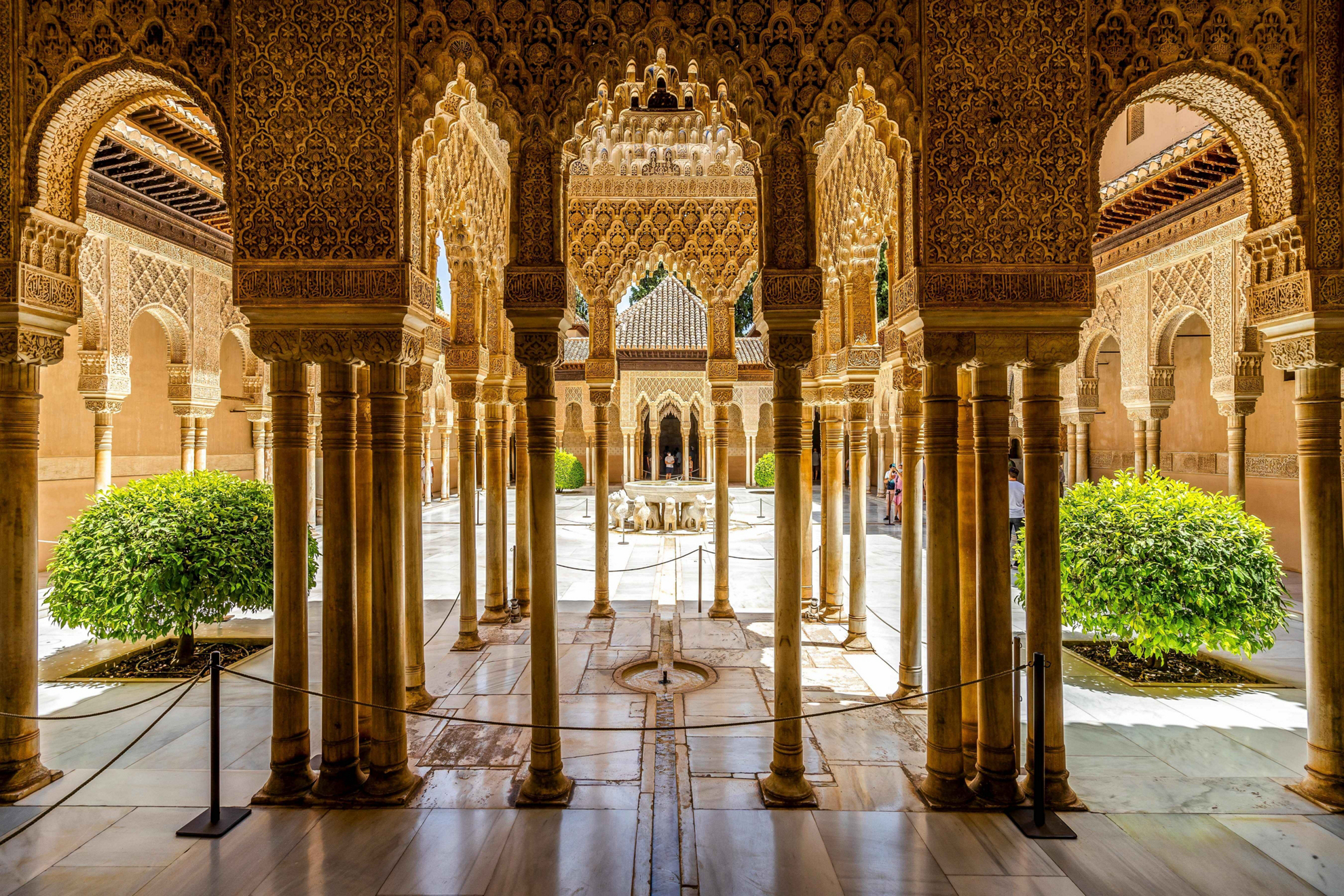
When visiting Granada, it is hard not to notice the extravagant splendour of the Alhambra. Perched imposingly on the al-Sabika hill, this expansive complex captivates visitors with its beauty. Yet, Alhambra is not just one building but a series of palaces, courtyards, gardens and villas protected by a fortress. Discover the history of the Alhambra and bring your visit to life with enchanting tales from the palace’s storied past.
Alhambra background information every visitor must know
Every good story begins with an element of mystery and the Alhambra’s origin is no exception. There remains a fierce debate over the name’s meaning. Some believe it originates from the Arabic word "al-Ḥamrā," translating to "the Red One.” An alternative explanation ties it to the cultural significance of the colour red in Muslim traditions, where it symbolises good fortune.
A less popular belief focuses on Alhambra's founder, Muhammad I, widely known as Alhamar. Some believe the name Alhambra to be the merging of “Alhamar '' with the Arabic term “al-Qasr” signifying “the palace”. Since the palace and fortress were constructed under Alhamar’s orders, it became known colloquially as “Qsar al-Hamra”, “Palace of Alhamar”, or the “Alhambra” for short. However, there is no proof that this last theory is true, despite how intriguing it sounds.
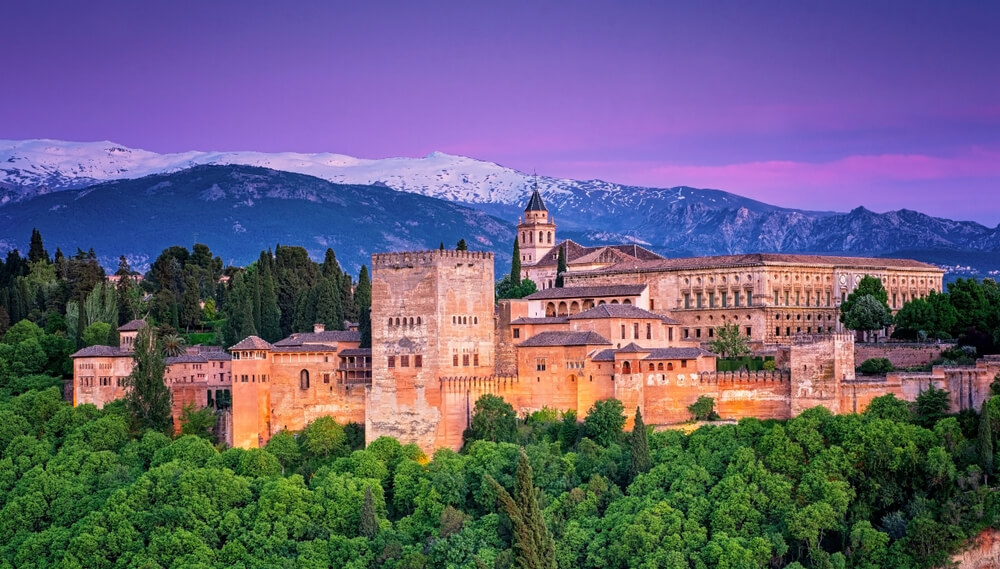
The Alhambra Palace
The history of the Alhambra starts with the Nasrid Dynasty
The presence of the Alhambra in Granada can be traced back to the 13th Century. At this time, the Nasrid Dynasty, the last Muslim dynasty in Spain, decided to build a fortress to act as a military stronghold. Mohammad I, the founder of the dynasty, is said to be the first inhabitant of the Alhambra, starting work on the complex in 1238.
Mohammad I, the founder of the dynasty, is said to be the first inhabitant of the Alhambra, starting work on the complex in 1238
The Nasrid period of art and architecture took hold across Andalusia between 1232 and 1492 and the Alhambra is often cited as one of the finest examples of Moorish architecture in Europe.
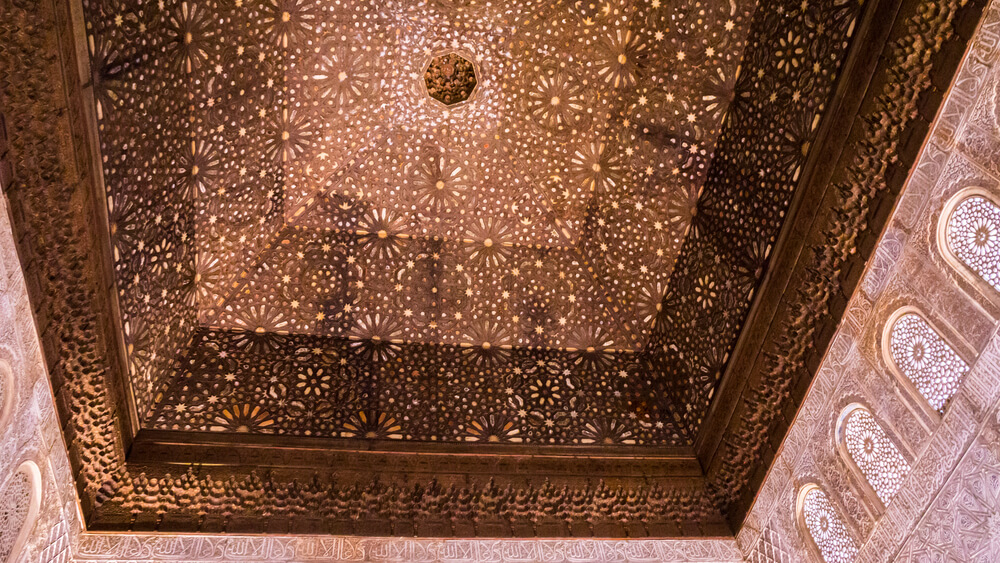
The ceiling in the Ambassador’s Hall
The Nasrid Palaces, Granada
The Nasrid leaders sought to create a space that represented their power, spirituality and wealth. They were committed to creating an earthly paradise and wanted the Alhambra to be as beautiful as possible. Stepping inside the walls of the Alhambra today, it is easy to imagine the opulence and wealth of the time. Admire the Nasrid Palaces’ history through the Islamic artistry that decorates surfaces with mesmerising geometric mosaics, calligraphy-style engravings and intricate tilework known as “azulejos”. Three palaces have been restored and are open to the public: the Palace of Lions, the Comares Palace and the Partal Palace.

The elaborate mosaic tiled walls of the Alhambra
The Court of Lions, Alhambra, Granada
To truly understand the history of the Alhambra, head to the Court of Lions, one of the most noteworthy examples of Islamic art inside the fortress. This smaller palace and courtyard, in the heart of the Alhambra, features an iconic central fountain supported by twelve marble lions. It was constructed by the sultan Muhammed V during the second period of his reign between 1362 and 1391. The Court of Lions alongside the Alhambra has been recognised as a UNESCO World Heritage Site, with the Court of Lions minted onto the 2011 limited edition, commemorative 2€ coins in Spain.
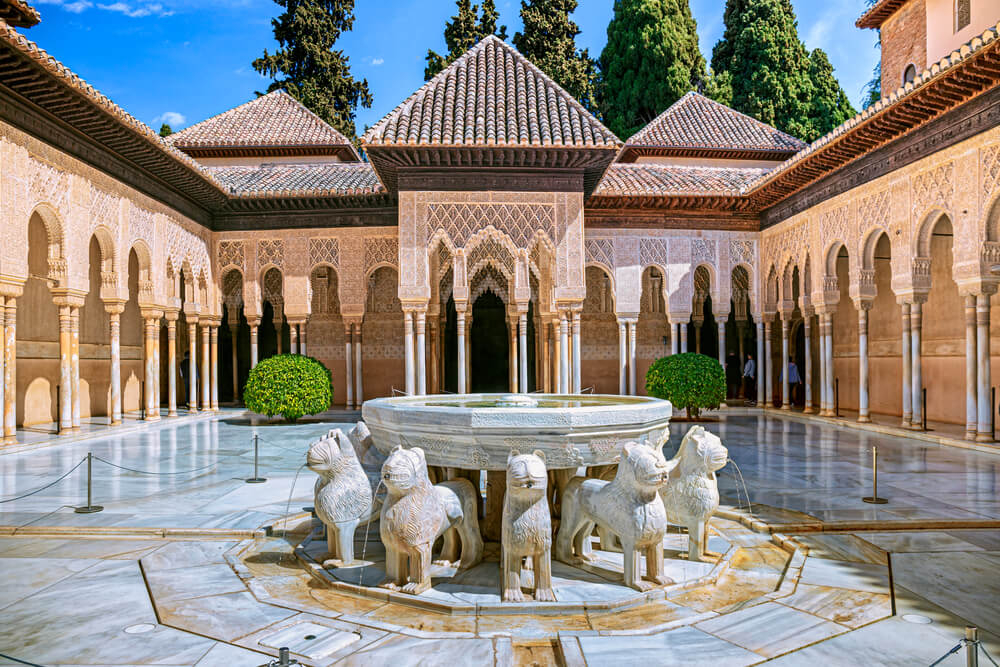
The patio and fountain of The Court of Lions
Court of the Myrtles and the Comares Palace
The Court of the Myrtles takes its name from the neatly manicured myrtle bushes, planted around the courtyard’s central pool. This imposing space provides a refreshing respite to the heat of the Andalusian sunshine and acts as a central meeting point inside the Nasrid Comares Palace, the first residency of the Nasrid royal family.
The most iconic feature of the courtyard is the Comares Tower, the tallest tower of the old fort
The most iconic feature of the courtyard is the Comares Tower, the tallest tower of the old fort. Positioned strategically for defence, this tower was once used to guard the city. Today climbing to the top rewards visitors with stunning views of the fortress and the surrounding city streets.
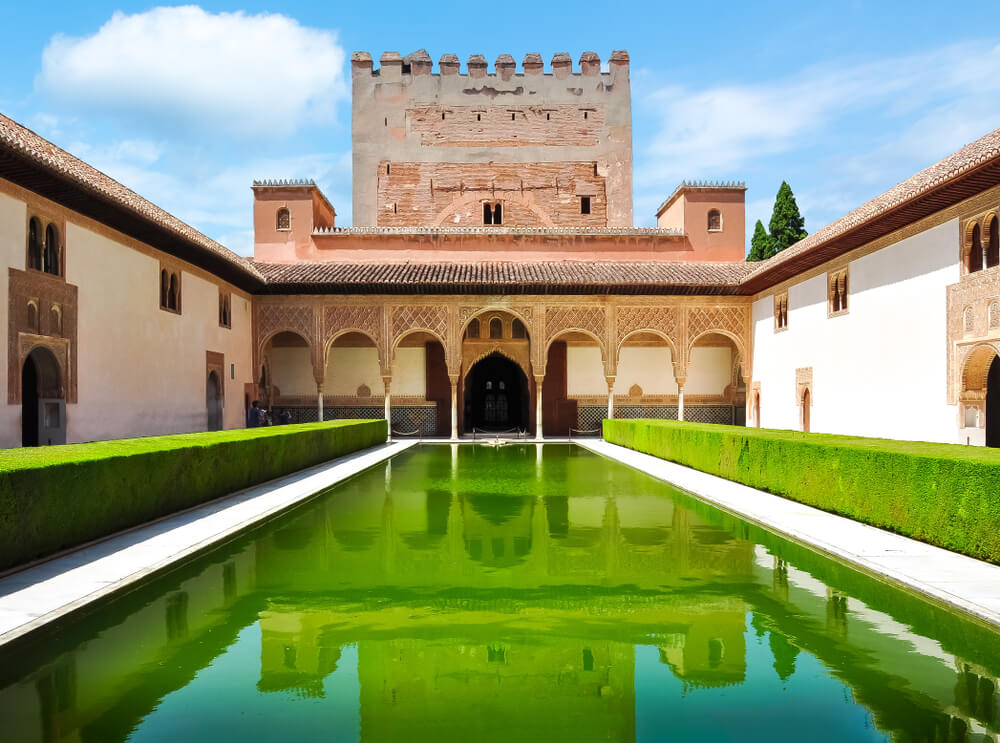
The Court of the Myrtles
Partal Palace
The Partal Palace is the oldest remaining Nasrid palace and a crucial element in the history of the Alhambra. Muhammad III built the palace in the 1300s, using an existing fortification tower as a lookout tower. Unlike the Palace of Lions and the Comares Palace, this elaborate residence was never inhabited by the Spanish Monarchy. Instead, it fell into private ownership and underwent numerous renovations. It was only in 1891 that it was ceded to the Spanish government and included in the Alhambra historical site.
Don’t forget to visit Generalife in Granada
Step outside the imposing walled fortress and discover Generalife, a home designed to emulate the paradise found in the Koran. When life at court got too busy, Nasrid sultans escaped to Generalife to enjoy the peace and tranquillity of nature. Its organically terraced gardens, full of fruit trees, therapeutic fountains and ornate ponds are a star attraction and an oasis in the sunbaked city of Granada.
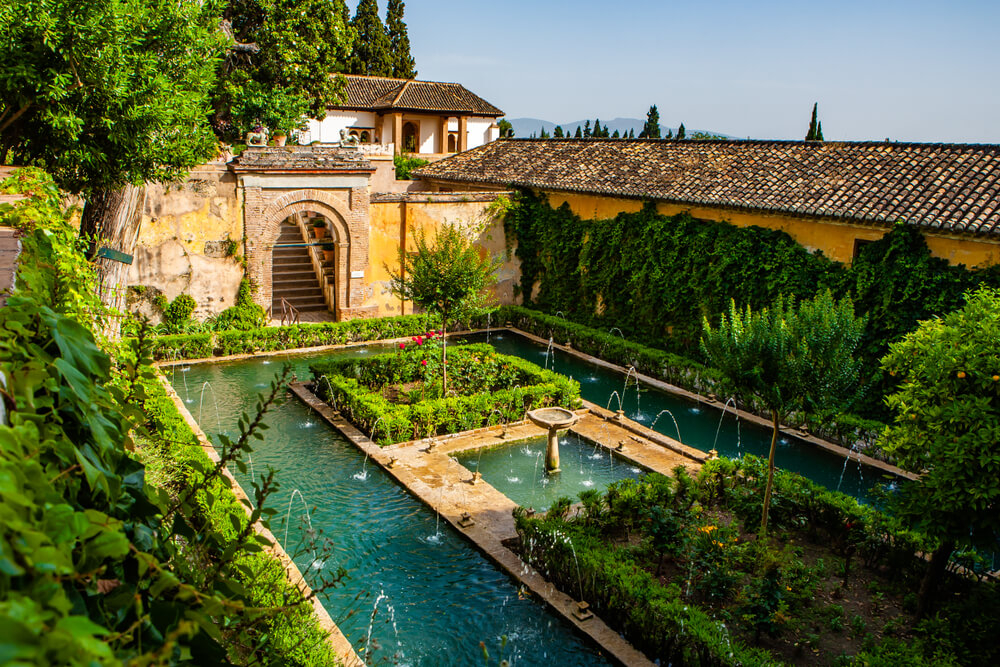
The Gardens of Generalife
Generalife in Granada: A bird’s eye view of the lush gardens of Generalife
It is important to remember that the history of the Alhambra is set against the turbulent “Reconquista” or “Christian conquests” that occurred all across Spain and spanned 770 years. During Alhambra's construction, many cities in Andalusia under Moorish rule began falling to Cristian forces. In 1492, the Catholic monarchs Ferdinand II of Aragon and Isabella I of Castile overthrew the Nasrid Dynasty in Granada, marking the end of the Reconquista. This bloodthirsty time saw the destruction of many Islamic buildings in Spain, yet the Alhambra was spared. In the following years, the Alhambra became the home to the Christian monarchs and numerous renovations were carried out.
The Charles V Palace, an important milestone in the Alhambra history timeline
The story of the Alhambra continues to evolve with the construction of the Charles V Palace, a symbol of the triumph of Christianity over Islam. Construction started in 1527 but was left unfinished until 1967. Charles V, Holy Roman Emperor and King of Spain built a palace inside the Alhambra to use as his summer residence. It is the most celebrated example of Renaissance architecture in Spain, yet no monarch has ever inhabited the palace. Today this spectacular building houses the Museum of the Alhambra on the first floor and on the second, the Fine Arts Museum of Granada.
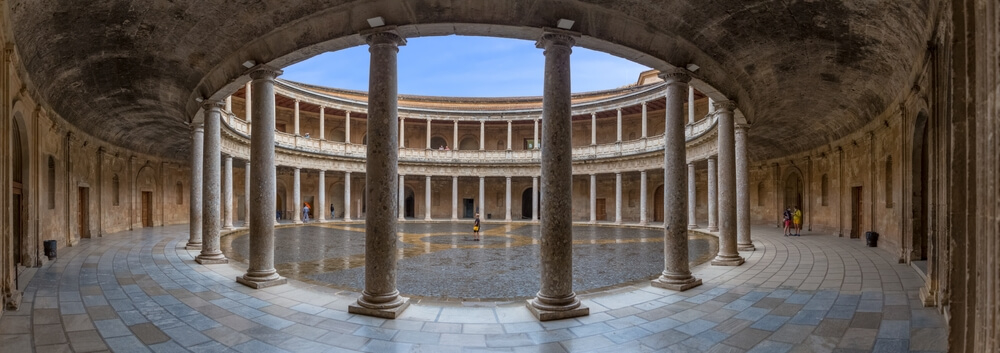
Inside the Charles V Palace
Visiting the Alhambra in Granada
If you are planning a trip to Granada, let yourself be swept away by the captivating history of the Alhambra. From ancient Moorish dynasties to bloodthirsty battles, it is not a relic of the past but a living testament to Spain’s rich cultural and historical heritage.
To make the most out of your visit, be sure to book your tickets ahead of time and opt for a guided tour. Set aside an entire day to explore and soak up the atmosphere since there is no shortage of things to see. If you want to make your trip to the Alhambra Palace in Granada extra special, book a night tour. Explore the Alhambra’s beauty under the romantic glow of moonlight and soak up the evocative atmosphere of a bygone era. However you choose to enjoy this emblematic landmark, it will be sure to leave a lasting impression.
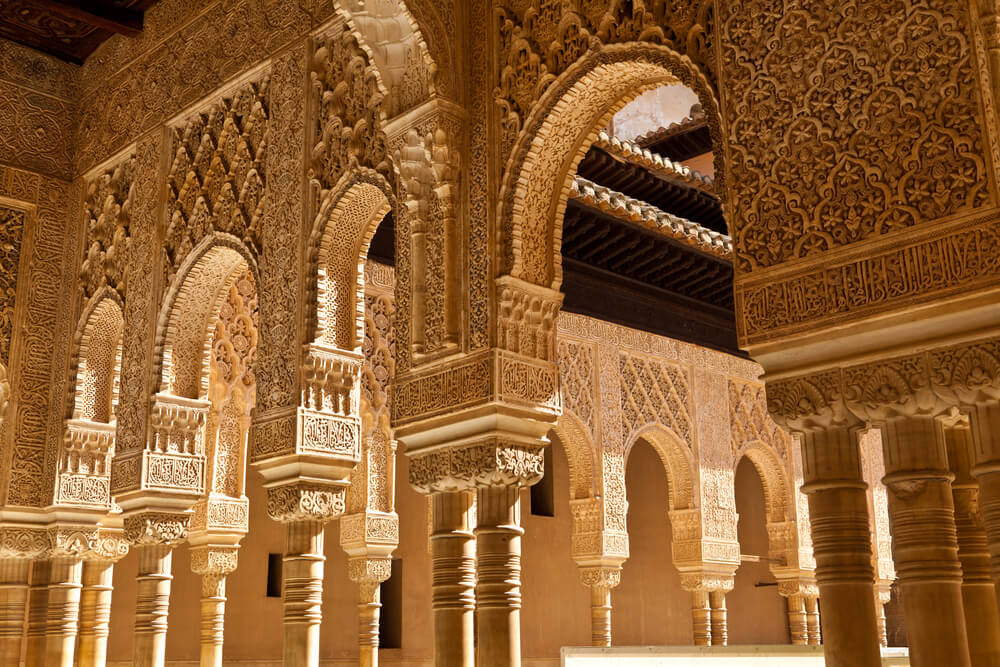
Inside the Court of Lions




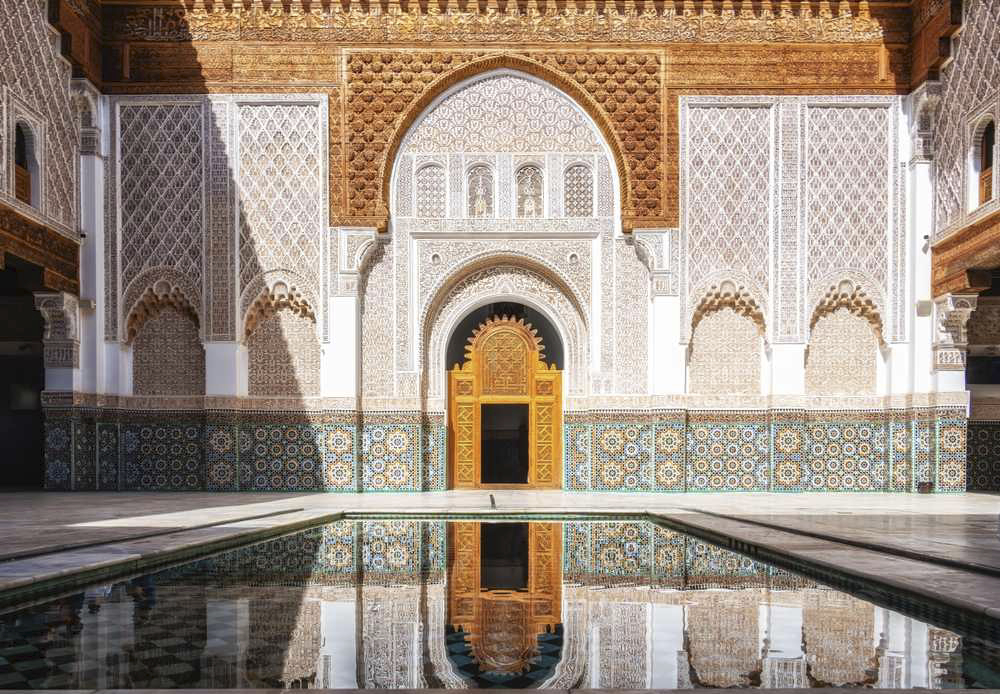




_435x320?&)
